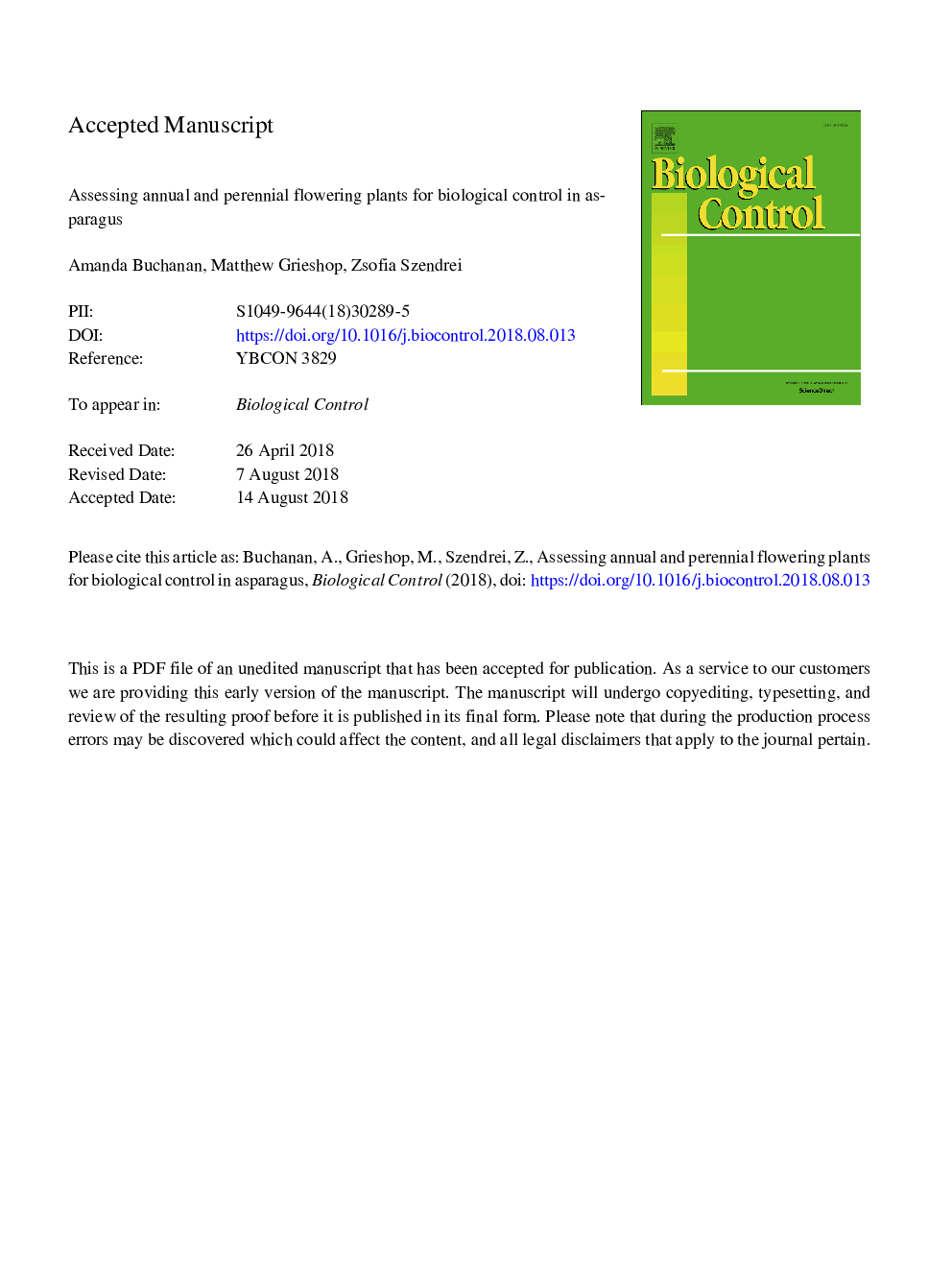| Article ID | Journal | Published Year | Pages | File Type |
|---|---|---|---|---|
| 8953080 | Biological Control | 2018 | 35 Pages |
Abstract
Despite the progress made to date to incorporate habitat diversification in farms, implementing it effectively for biological control programs in agriculture still faces many challenges. Our goal was to screen annual and perennial flowering plant species for their attractiveness to natural enemies and herbivores, and to select promising species to be used as flower enhancements in asparagus agroecosystems. Tested perennials were generally more attractive to predators than to parasitoid wasps, which were found in low numbers during our study. Among the annual plants, sweet alyssum (Lobularia maritima L. Desv.) was highly attractive to parasitoid wasps in common garden experiments and was selected for use in flowering borders, but it was not attractive to parasitoid wasps in asparagus field trials. We did not detect any effects of sweet alyssum on asparagus miner damage or on generalist herbivore abundance in asparagus fields. Thrips abundance was reduced in asparagus adjacent to sweet alyssum, but only at the field edge. Emergence rates from excised asparagus miner pupae were low with 18% (94) surviving, of which 77 were asparagus miners and 17 were parasitoids. In summary, although flower enhancements can often provide benefit for biological control of herbivores, our current results did not support this finding, but we suggest that continued effort is made to test the potential of perennial plants as flower enhancements in this agroecosystem as they require less maintenance than annuals.
Related Topics
Life Sciences
Agricultural and Biological Sciences
Agronomy and Crop Science
Authors
Amanda Buchanan, Matthew Grieshop, Zsofia Szendrei,
